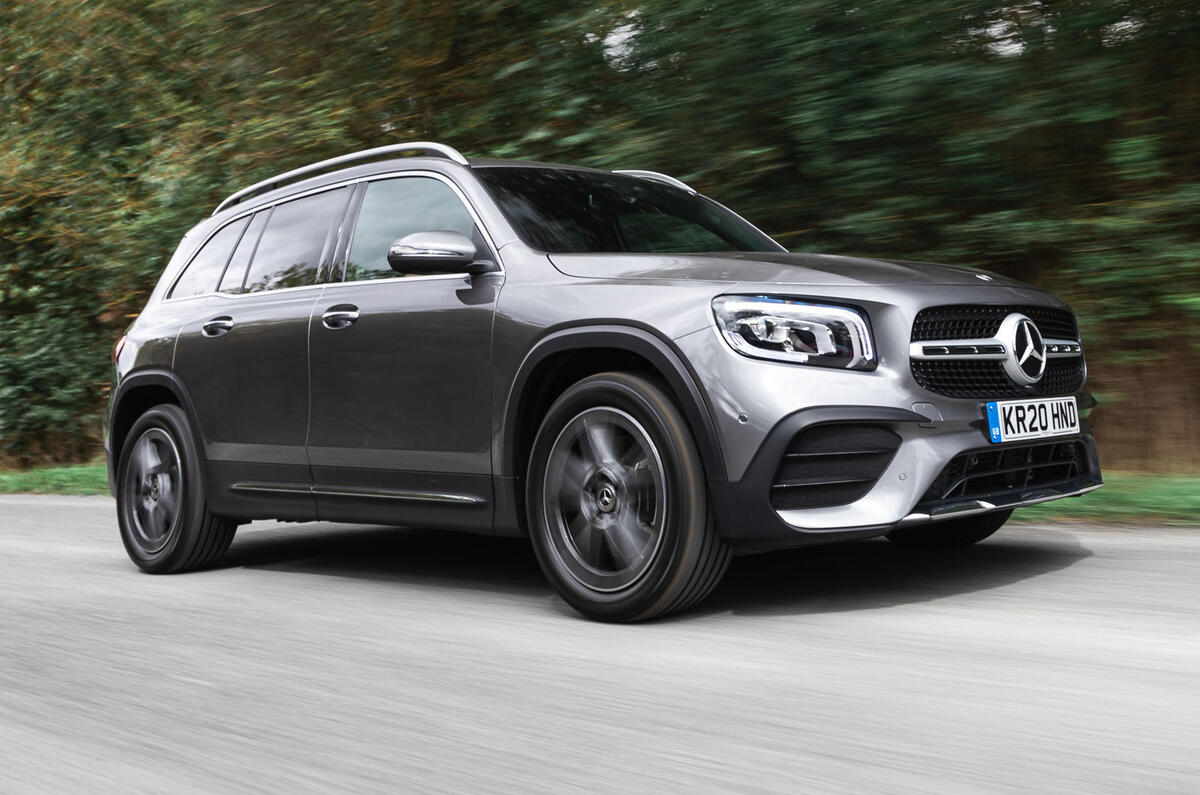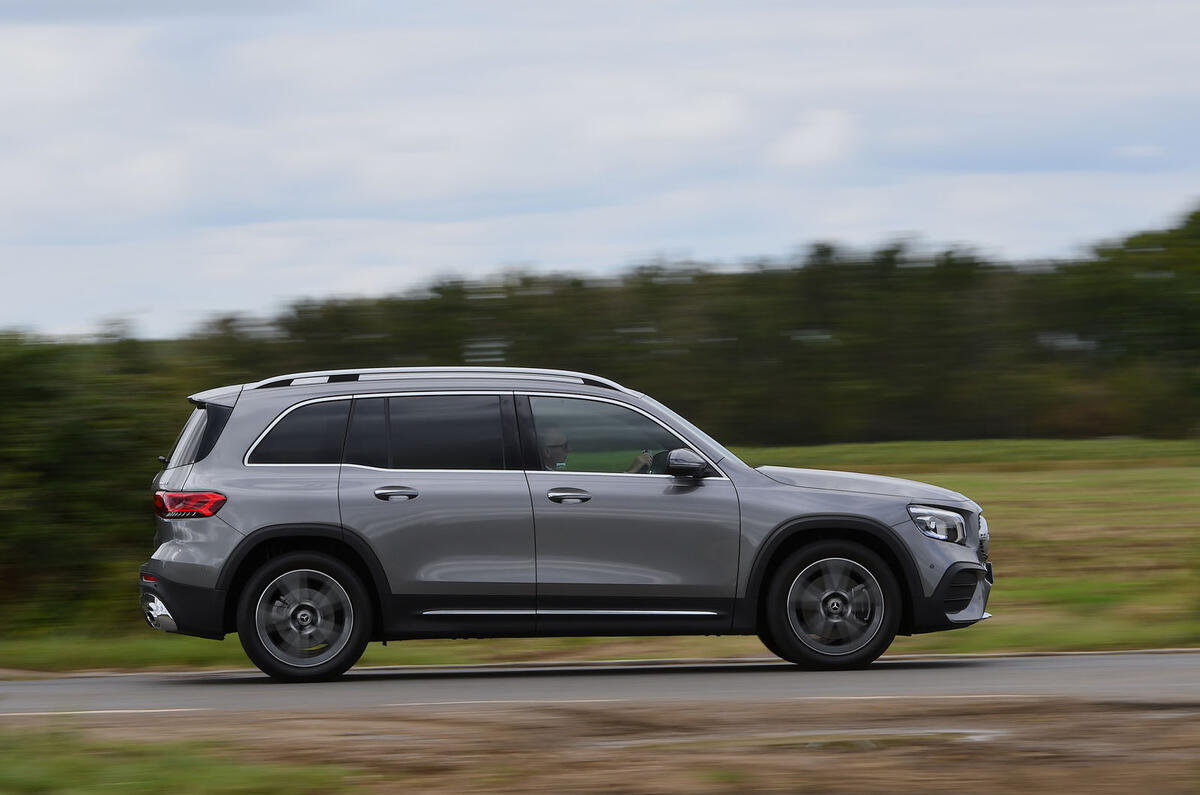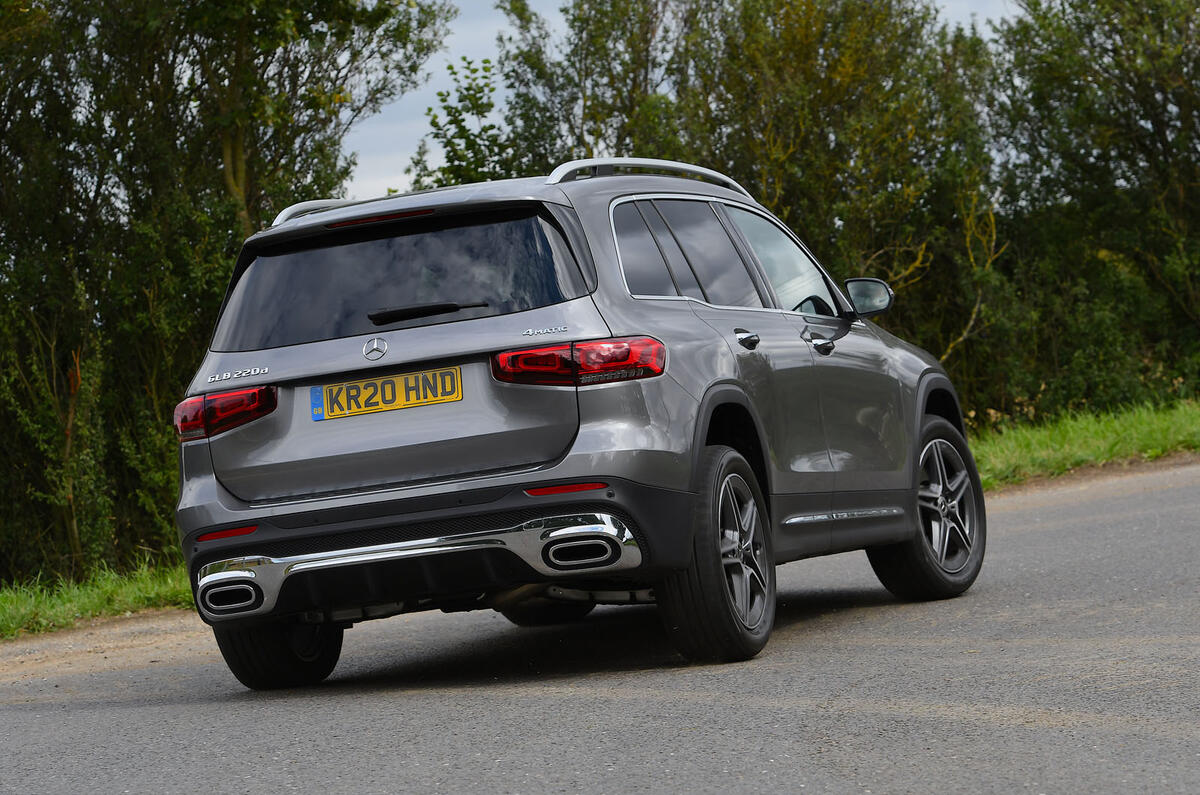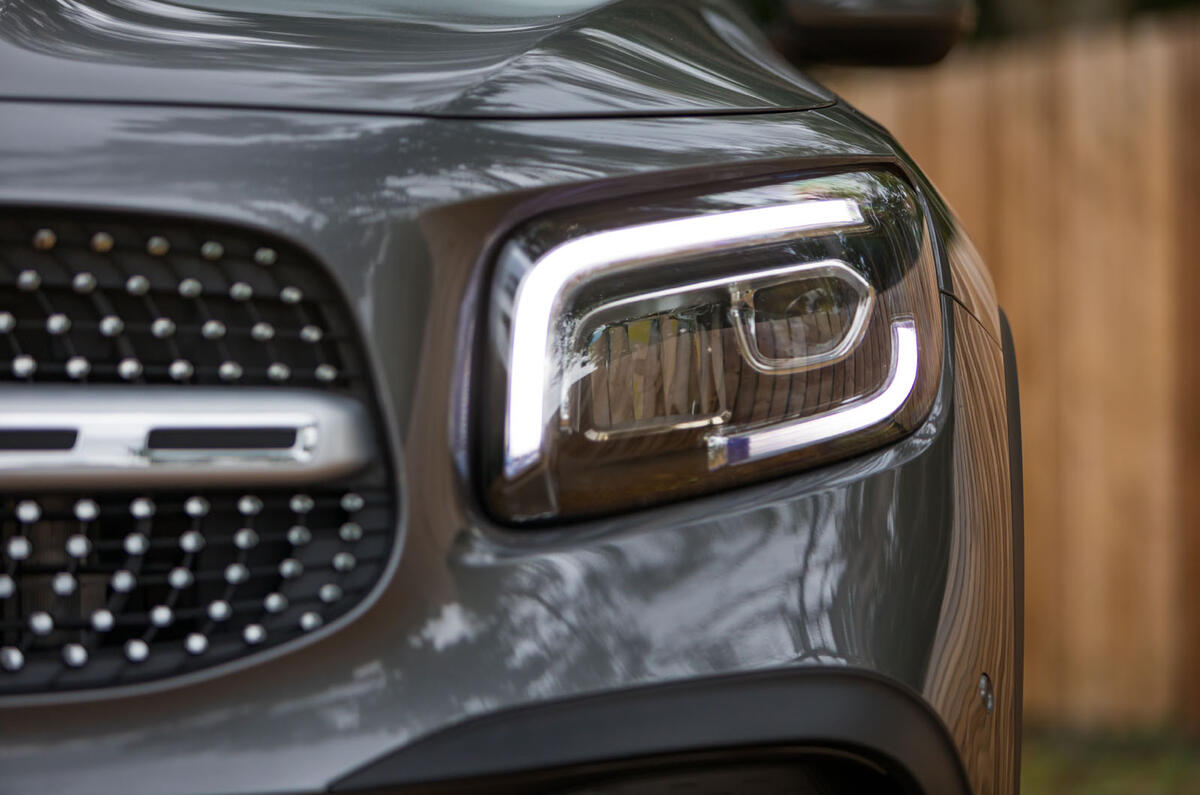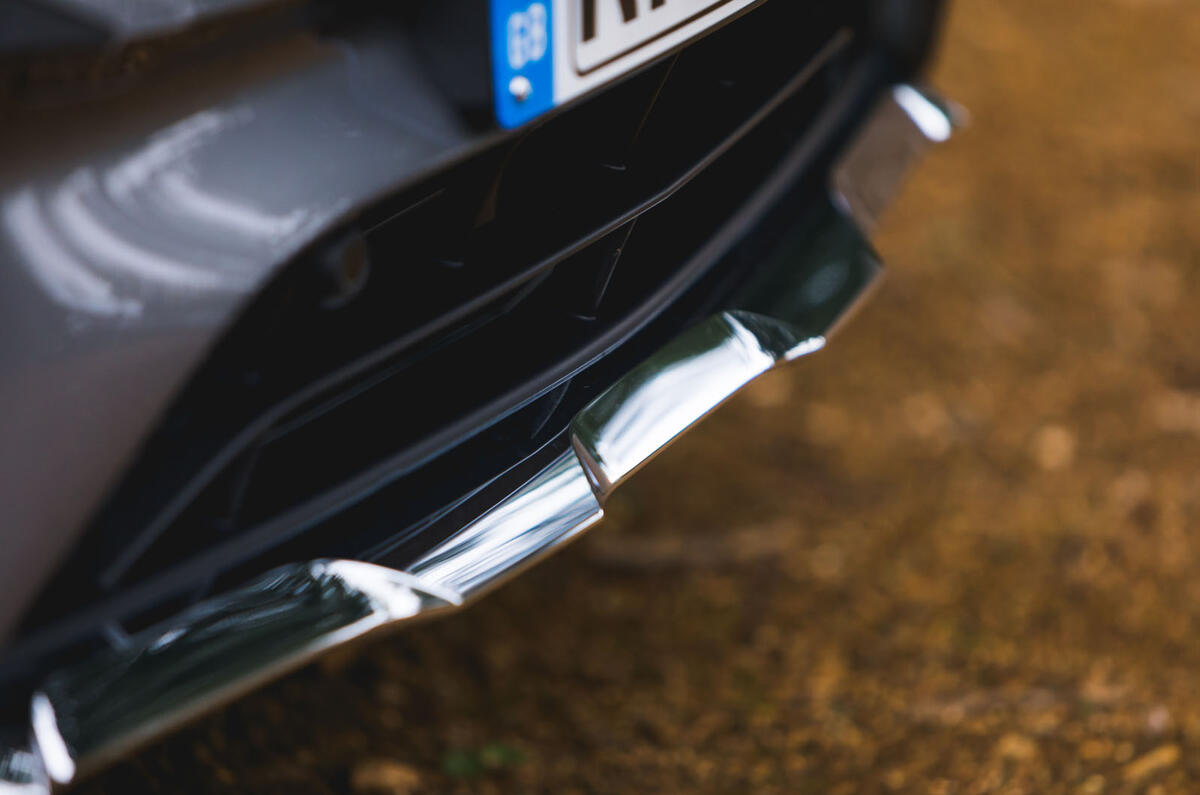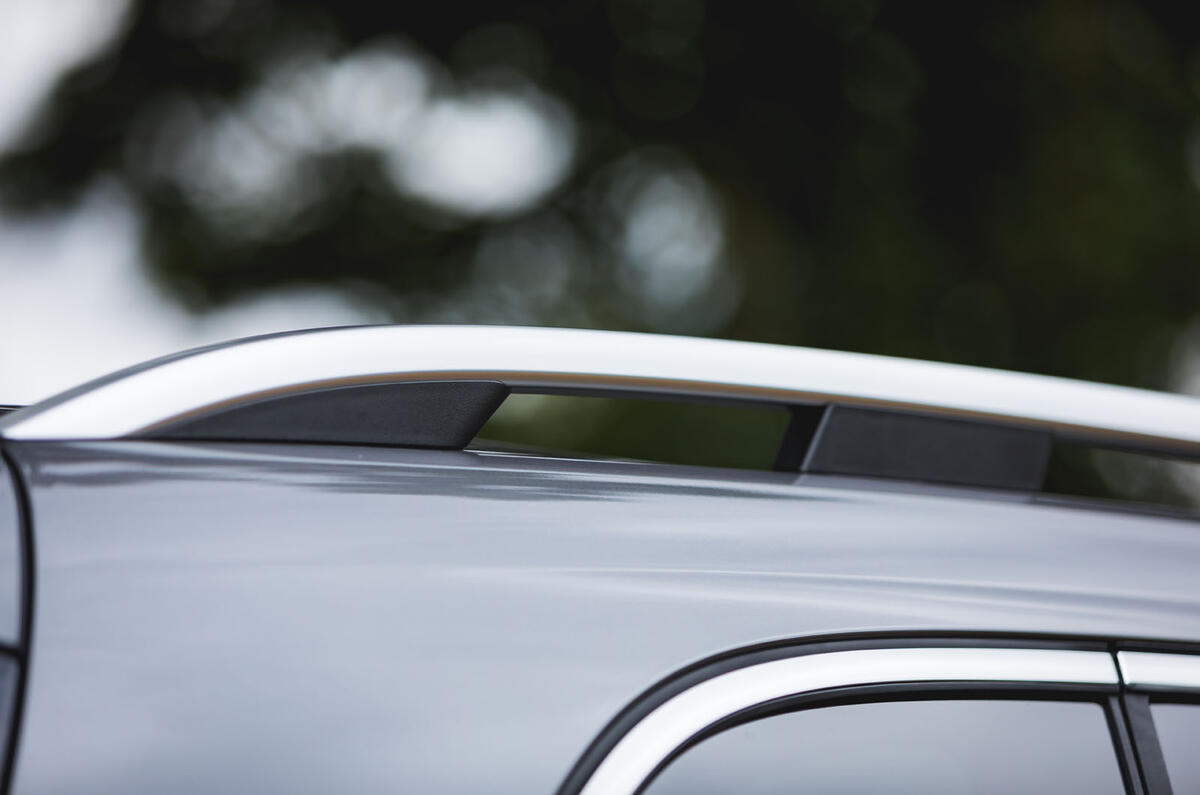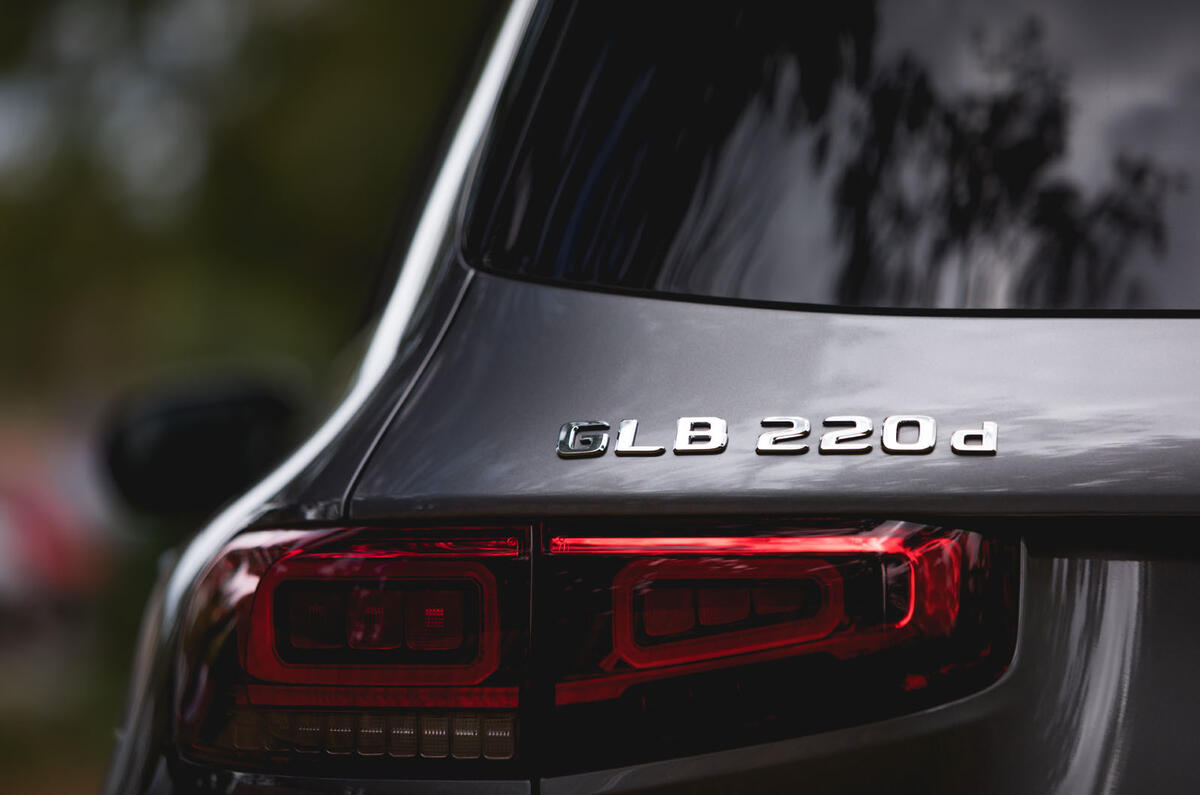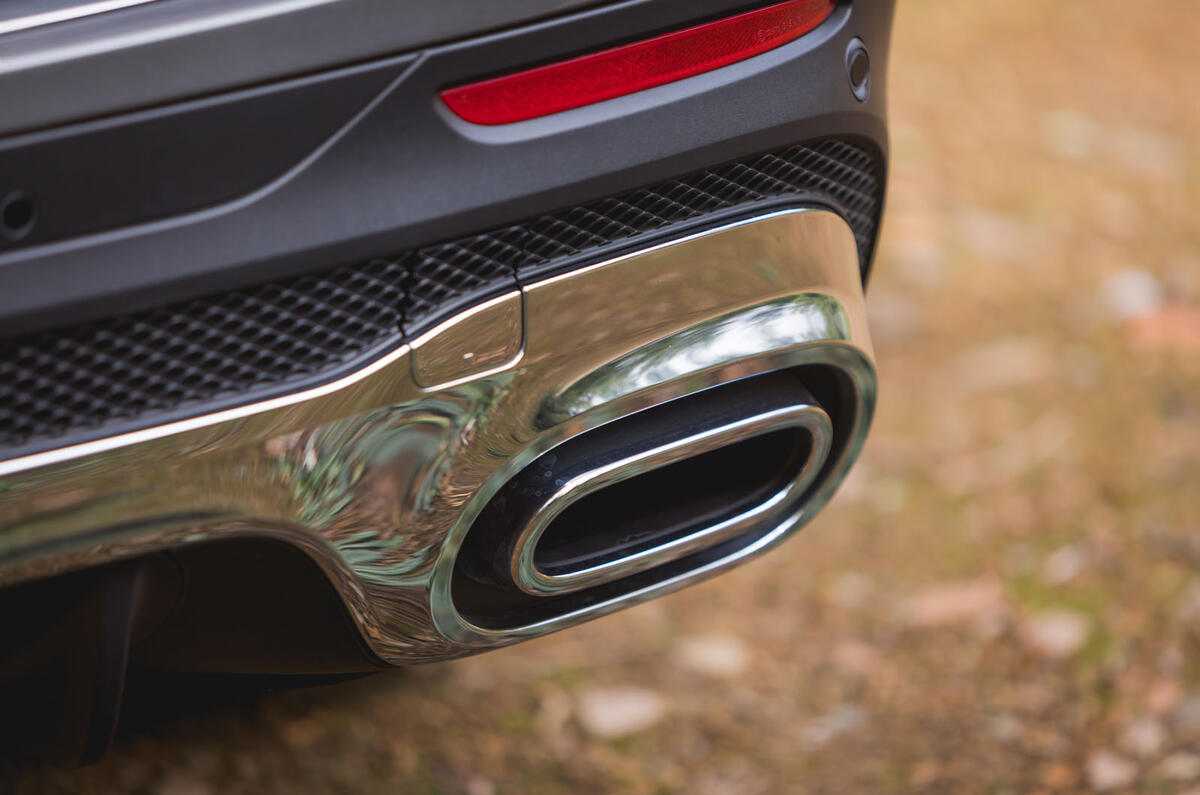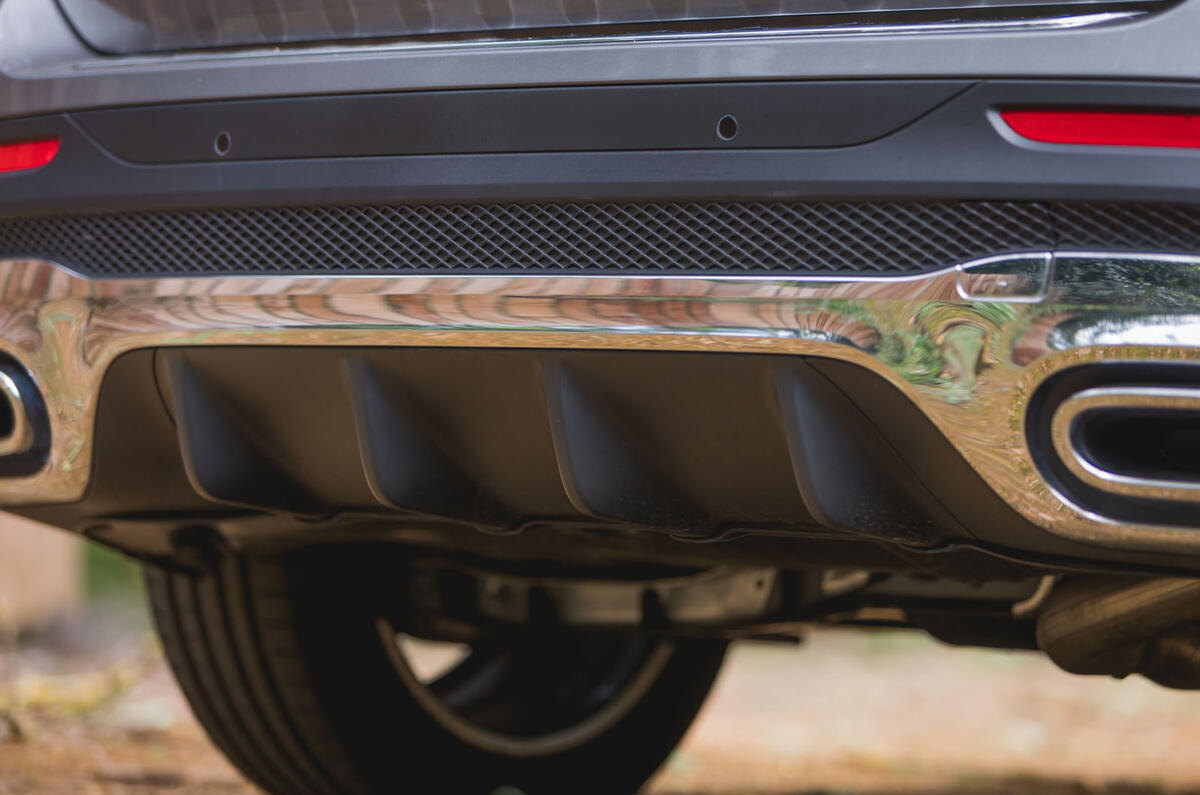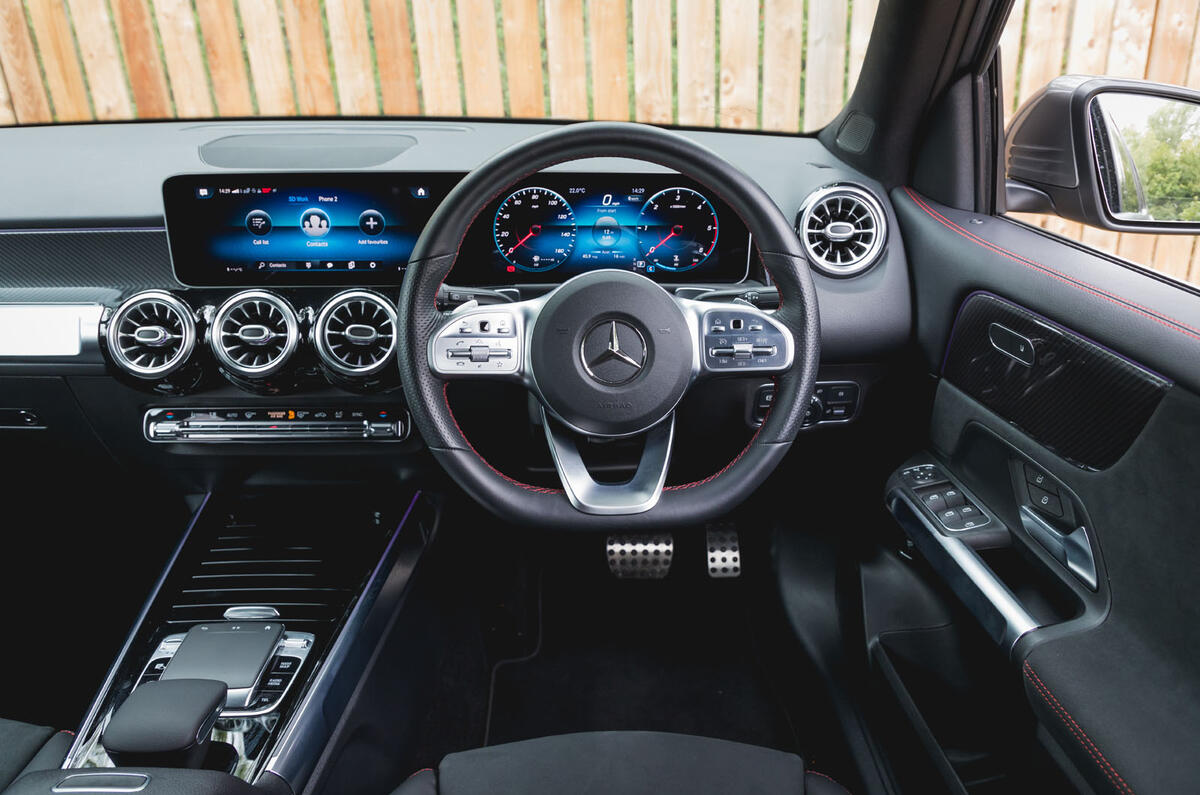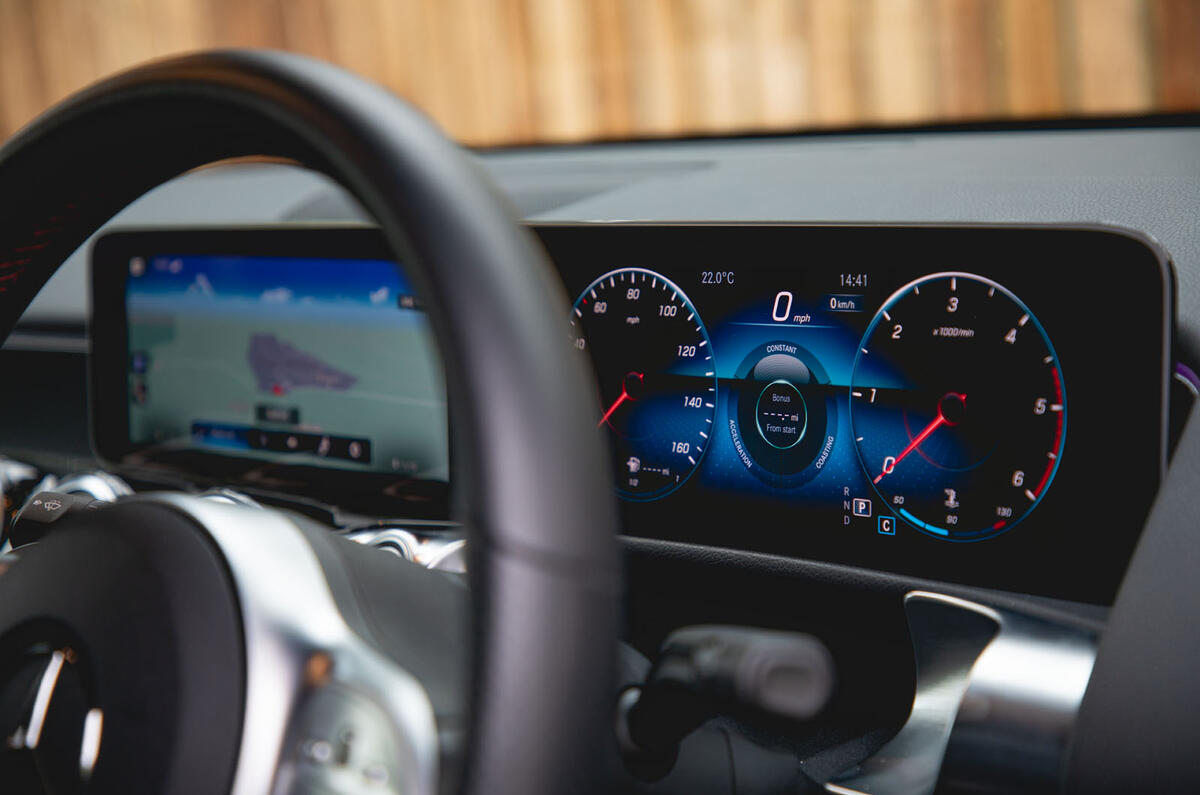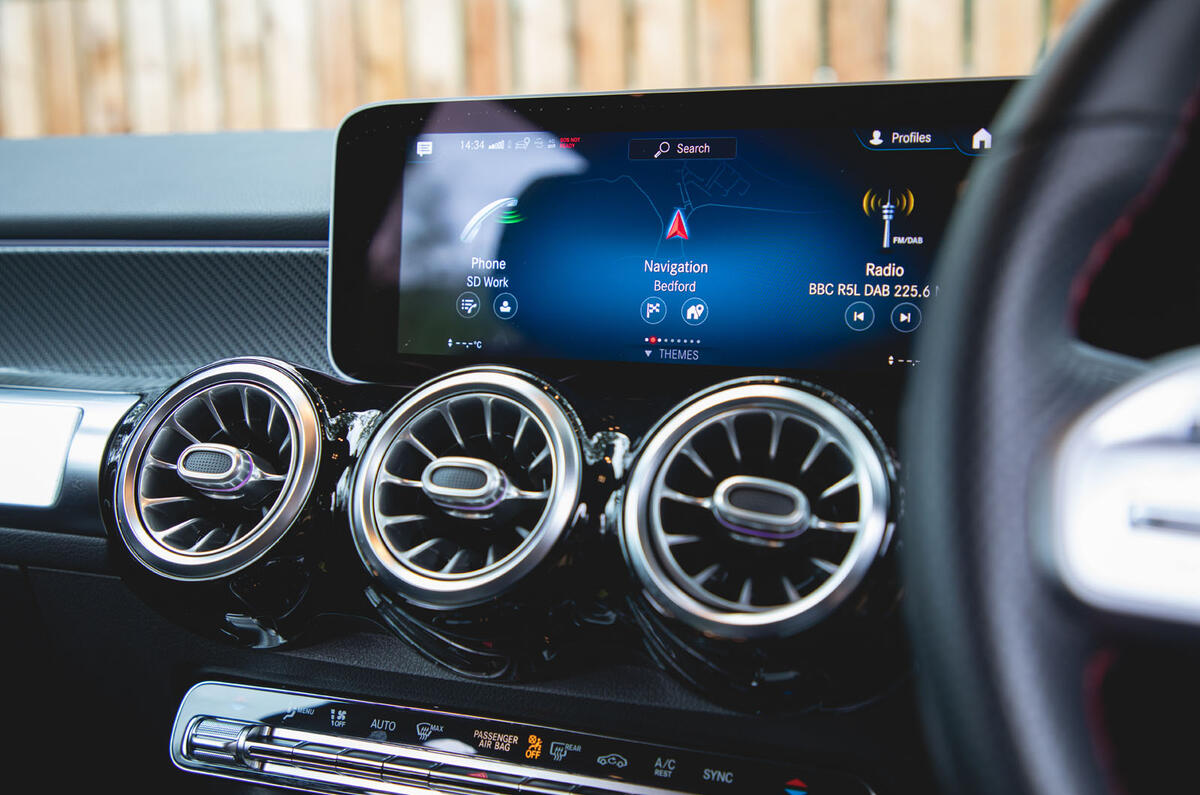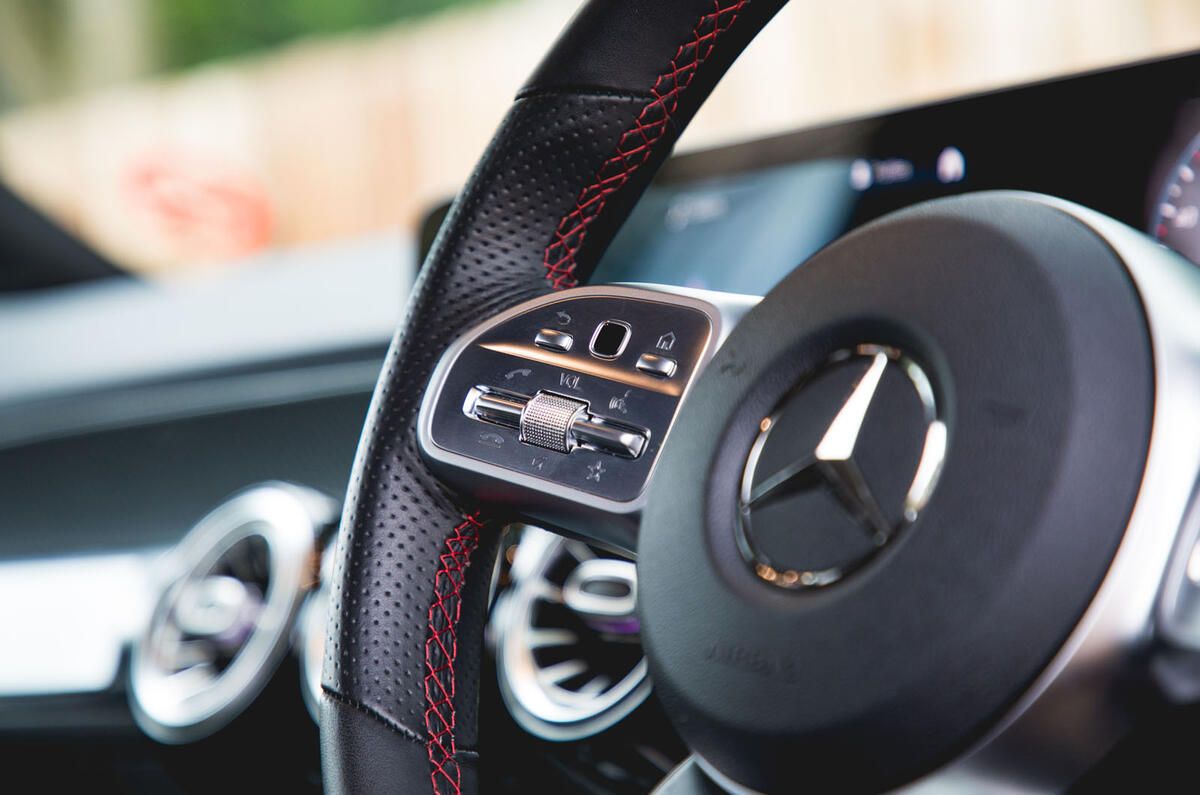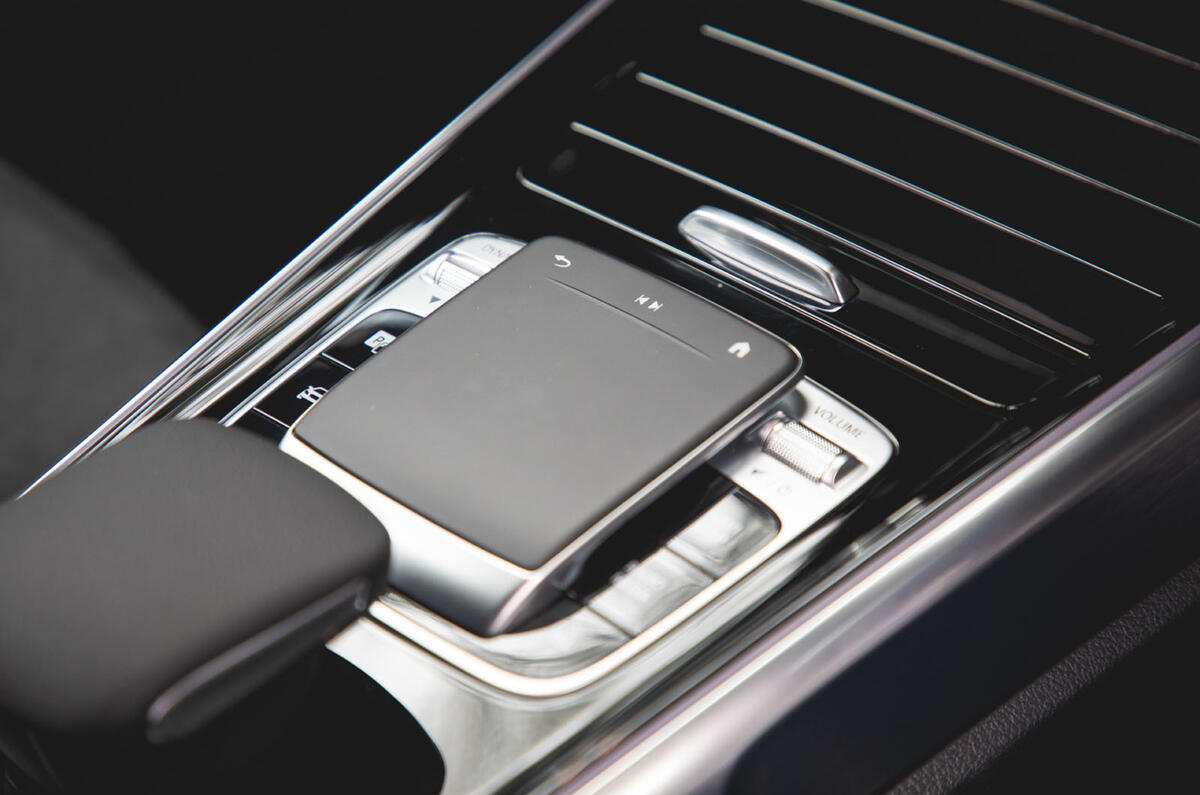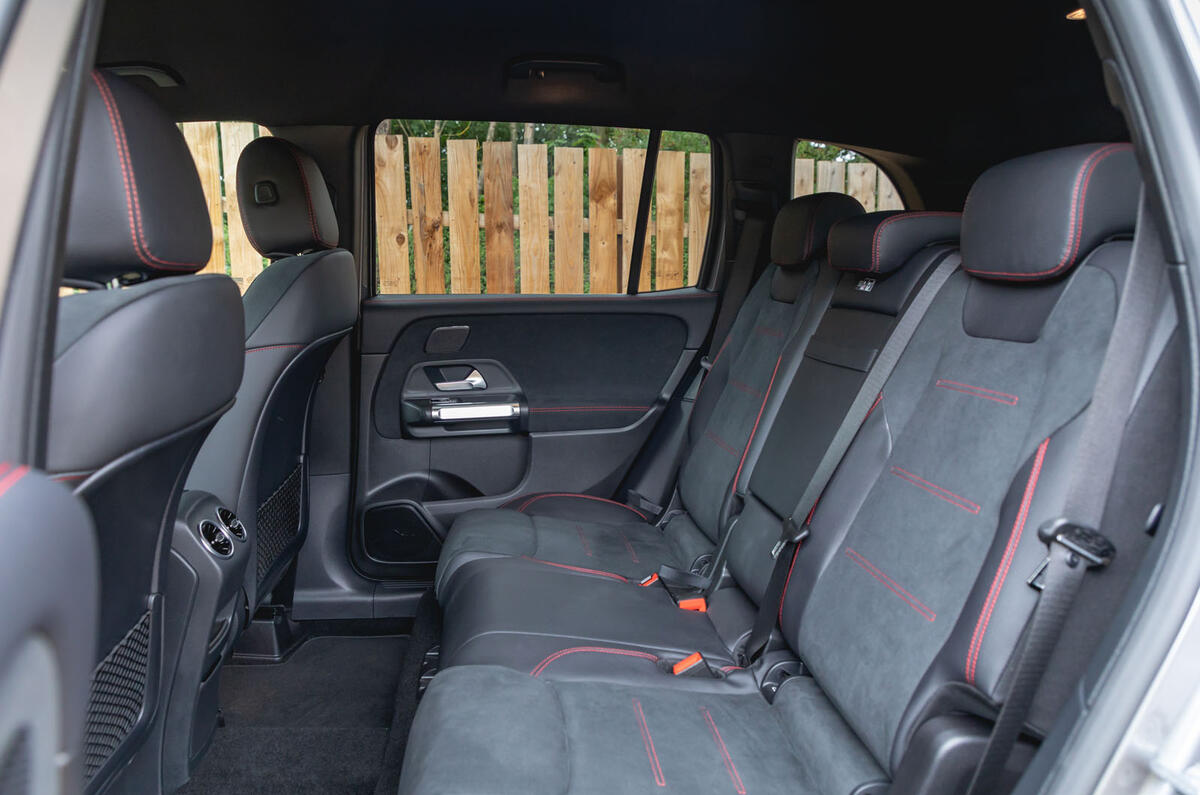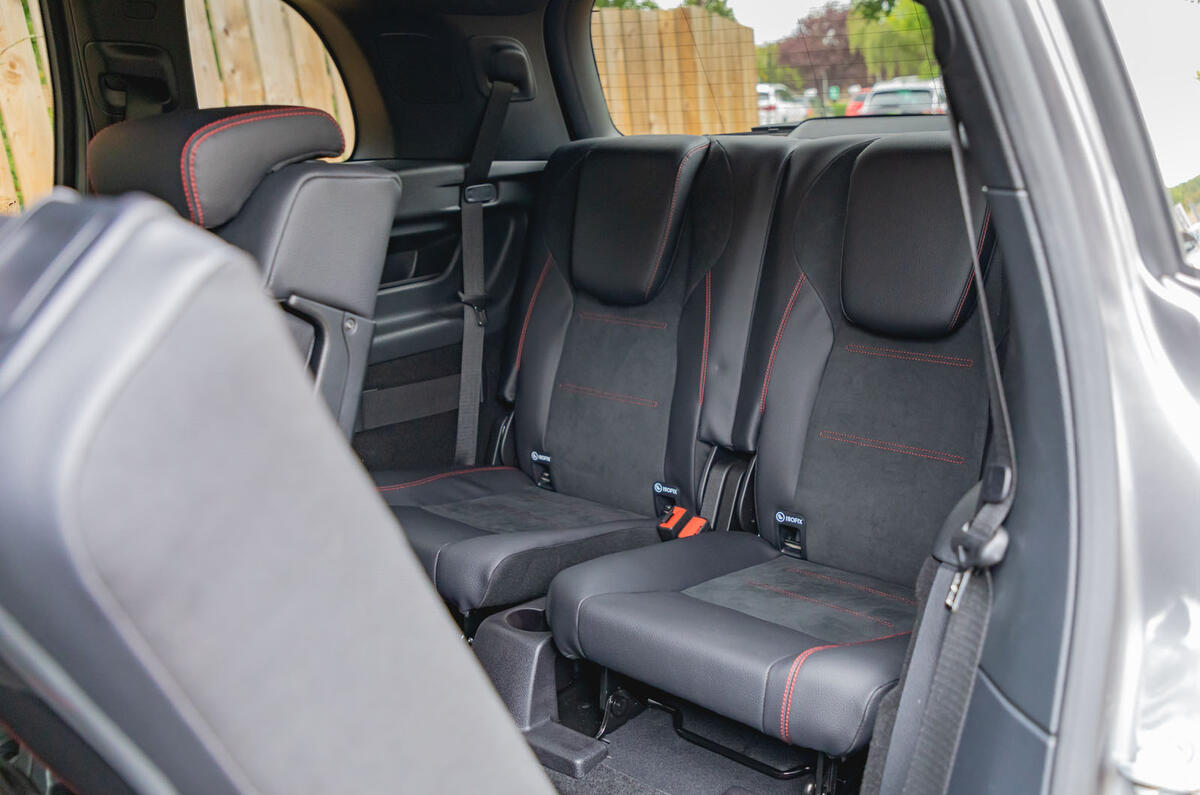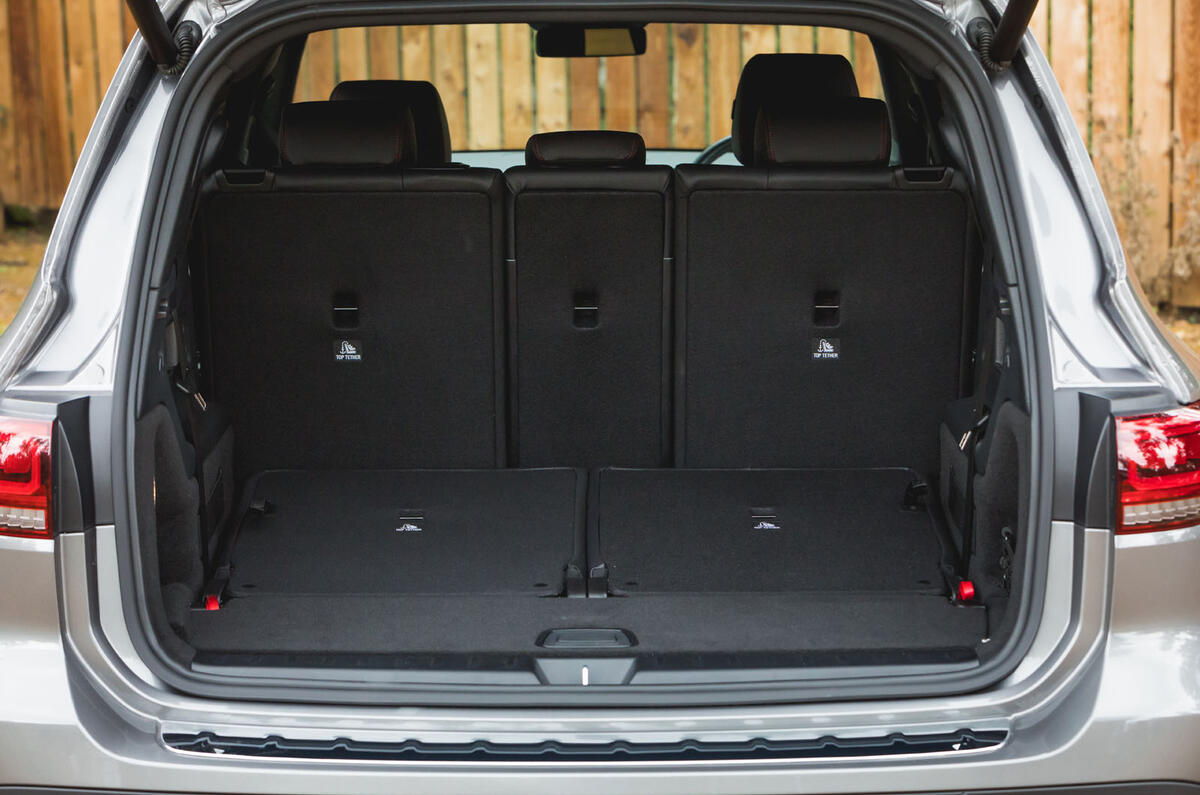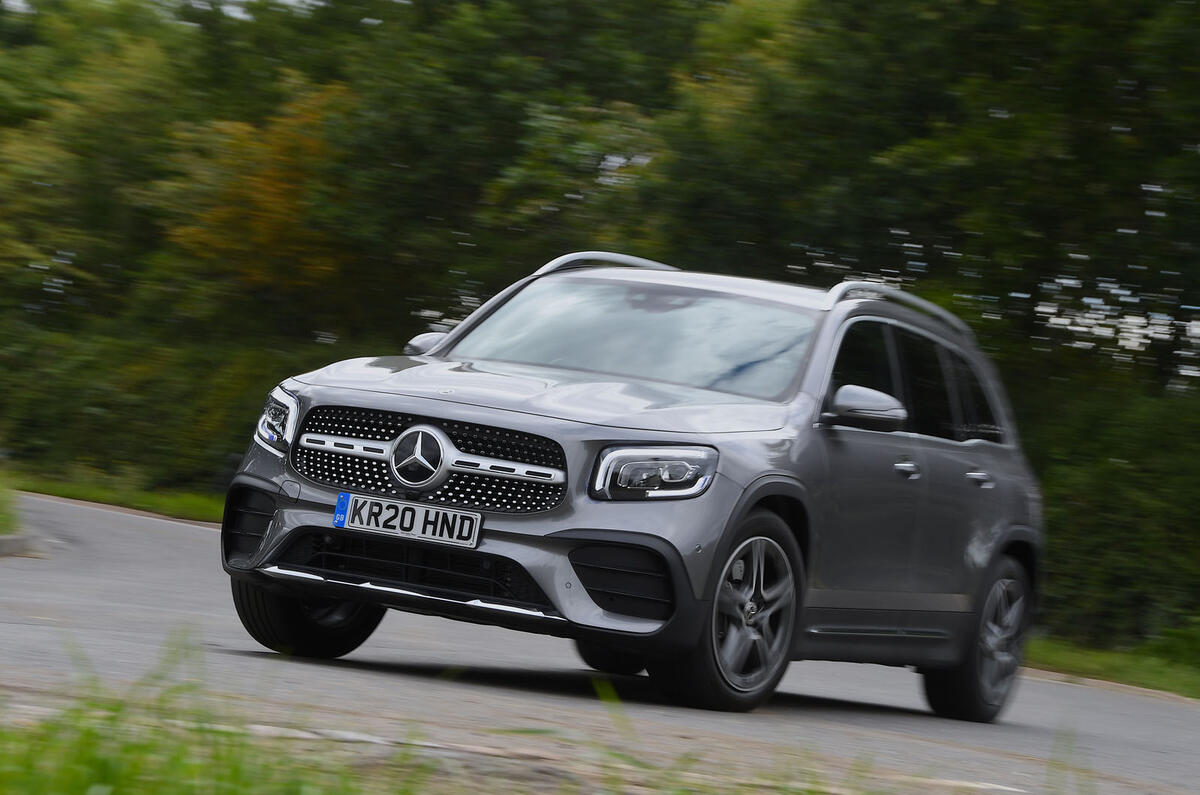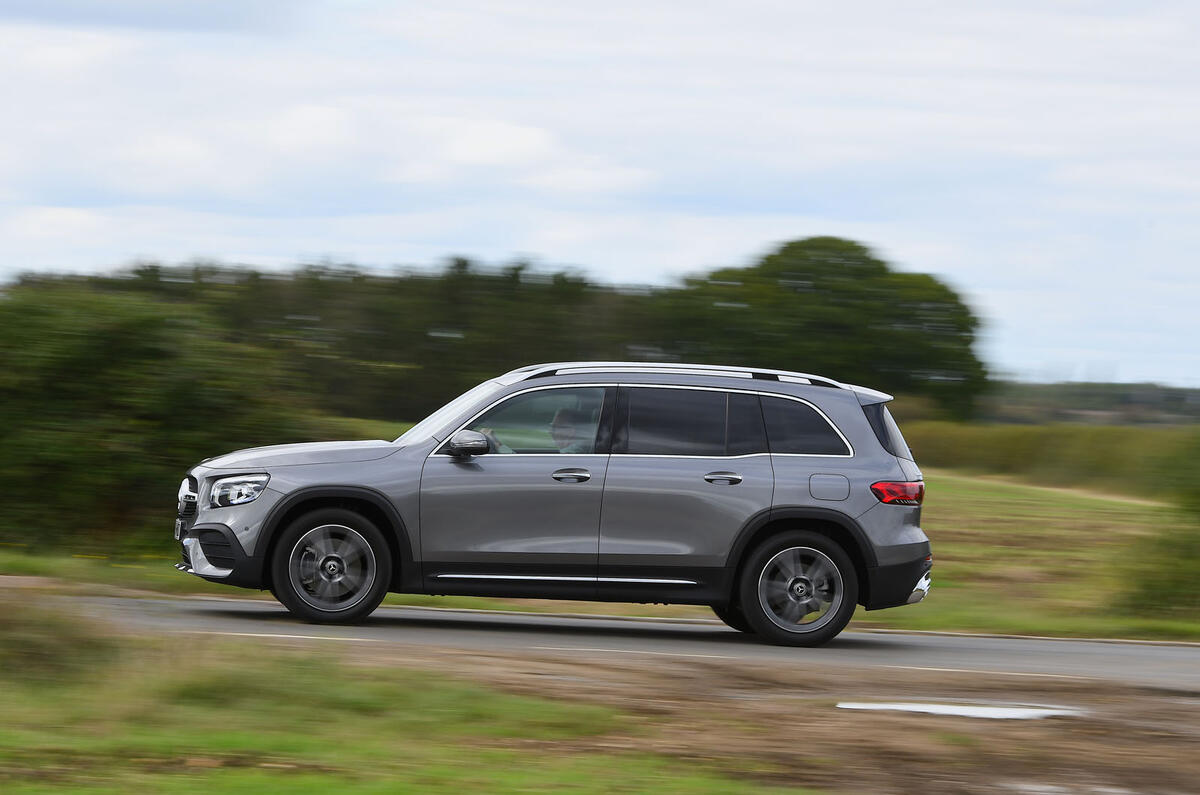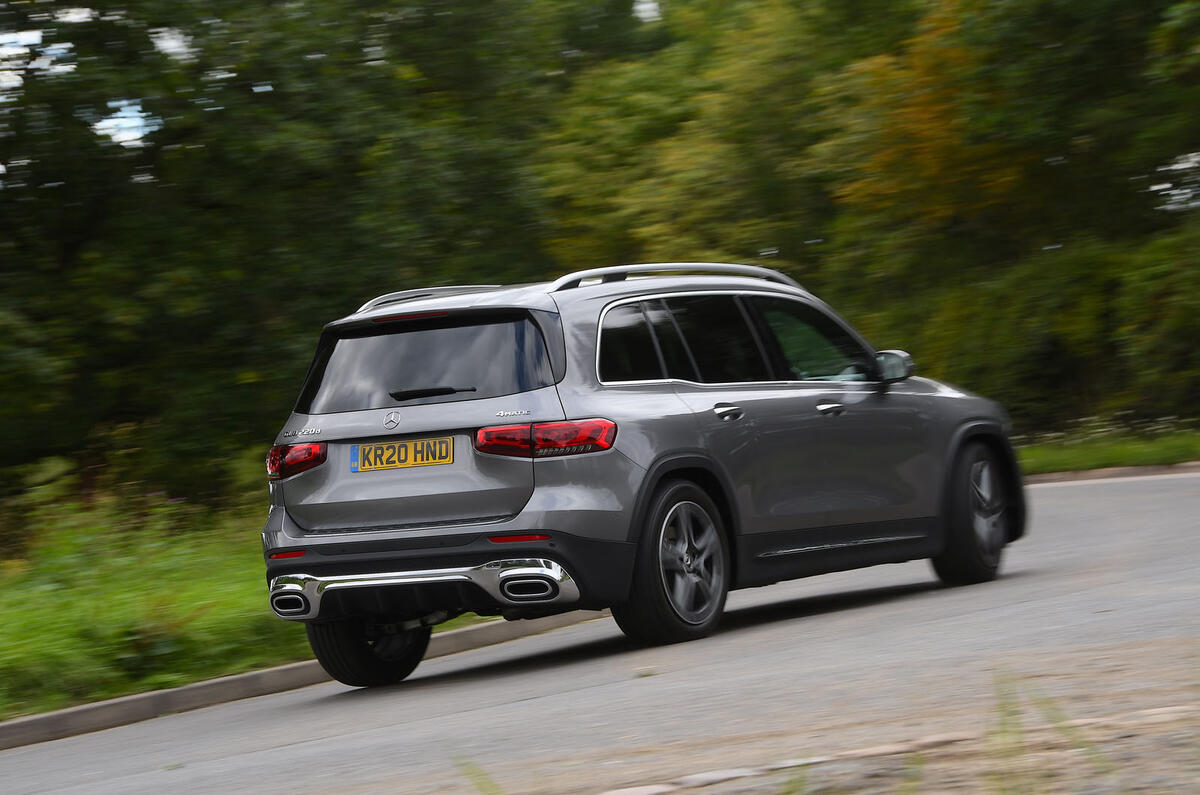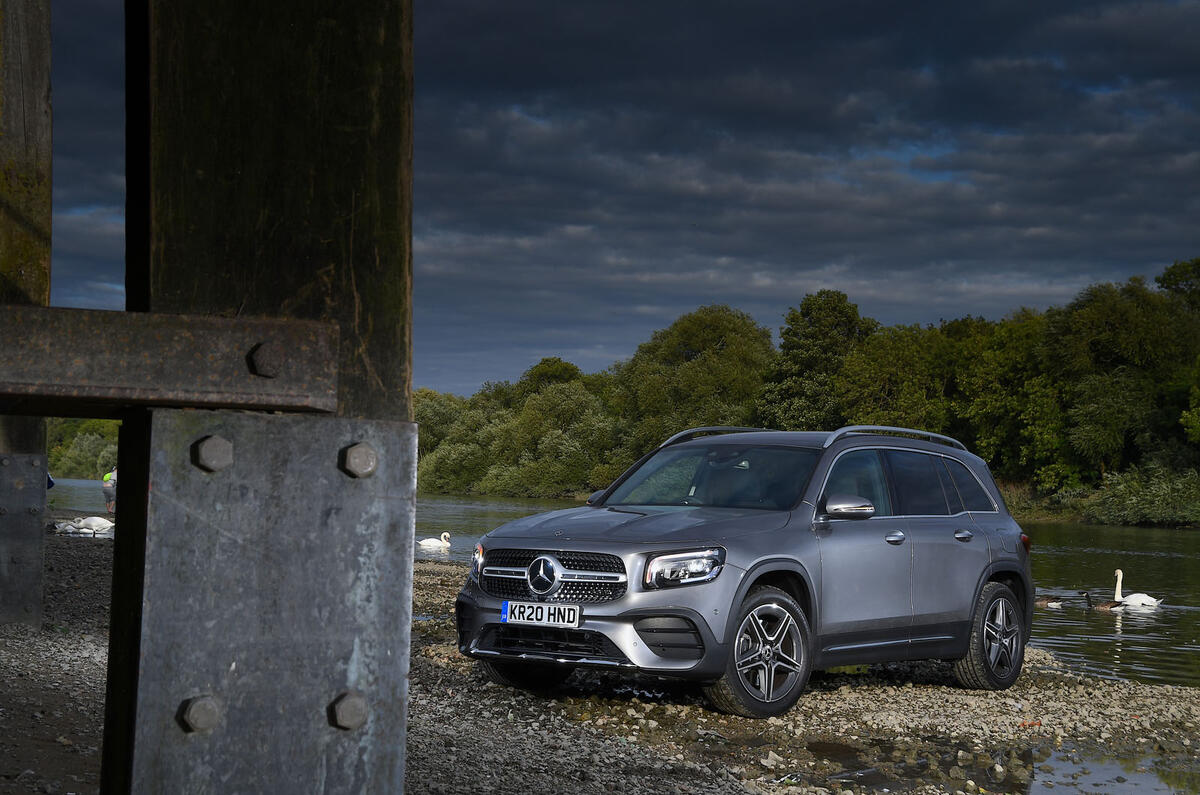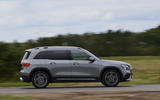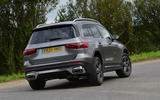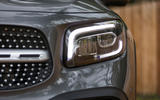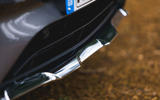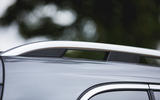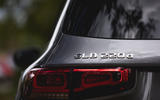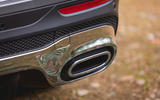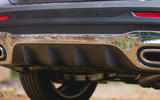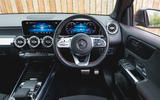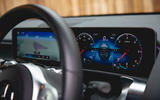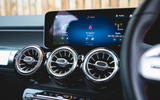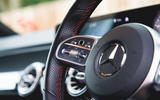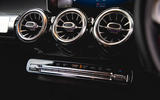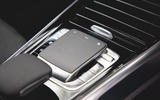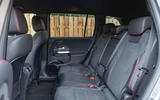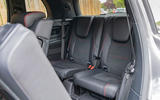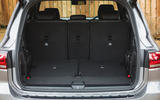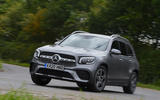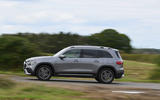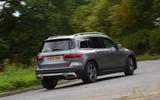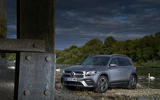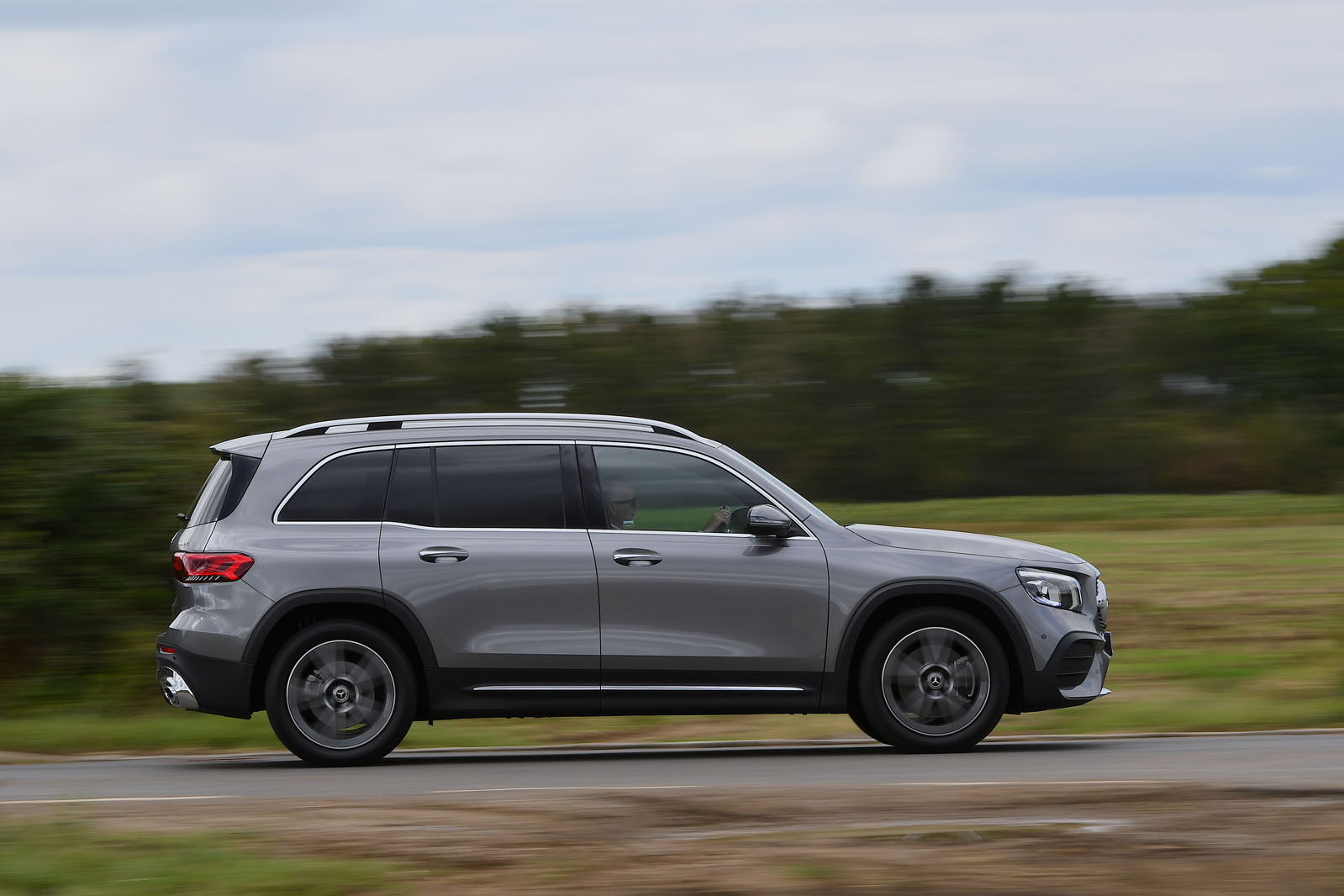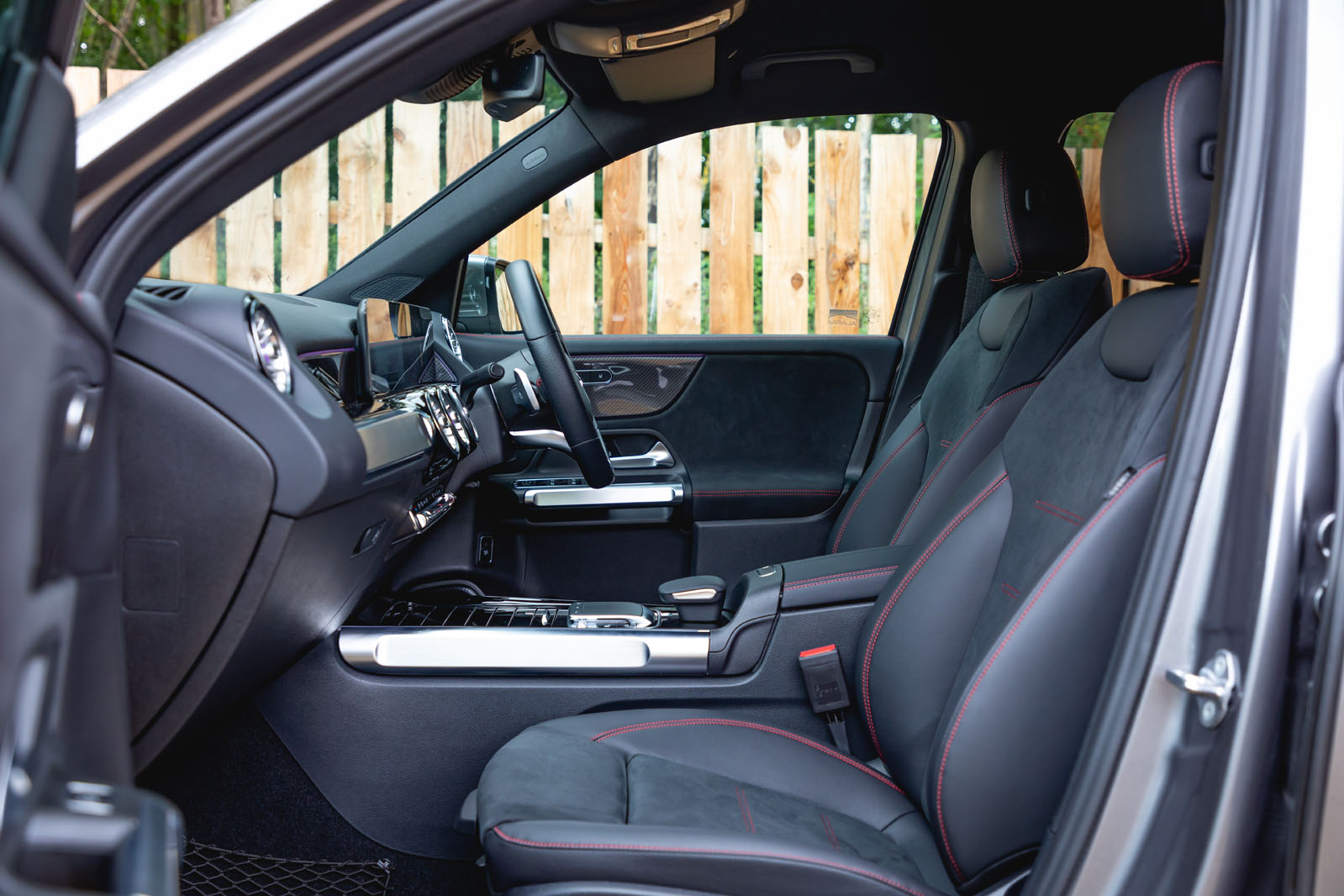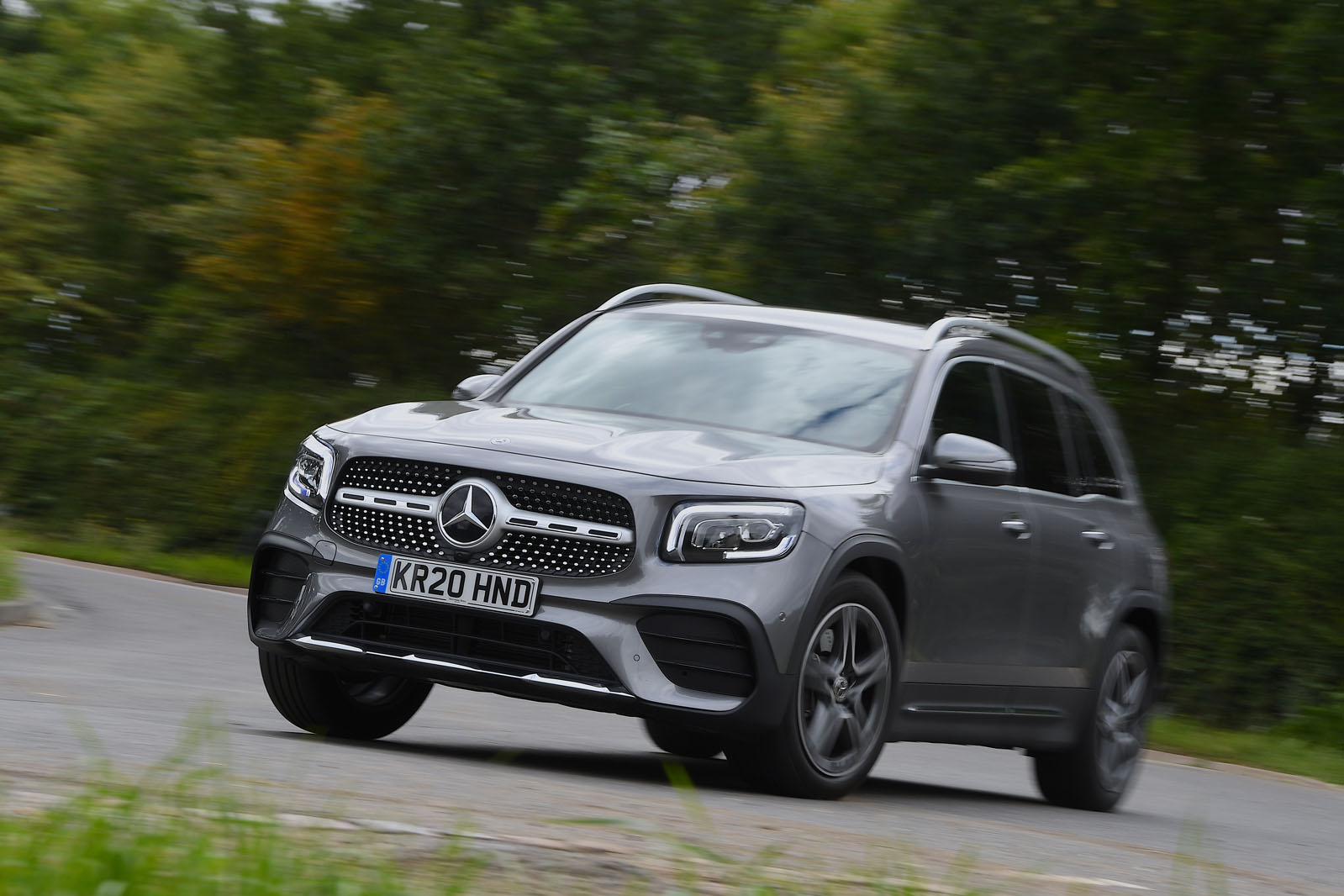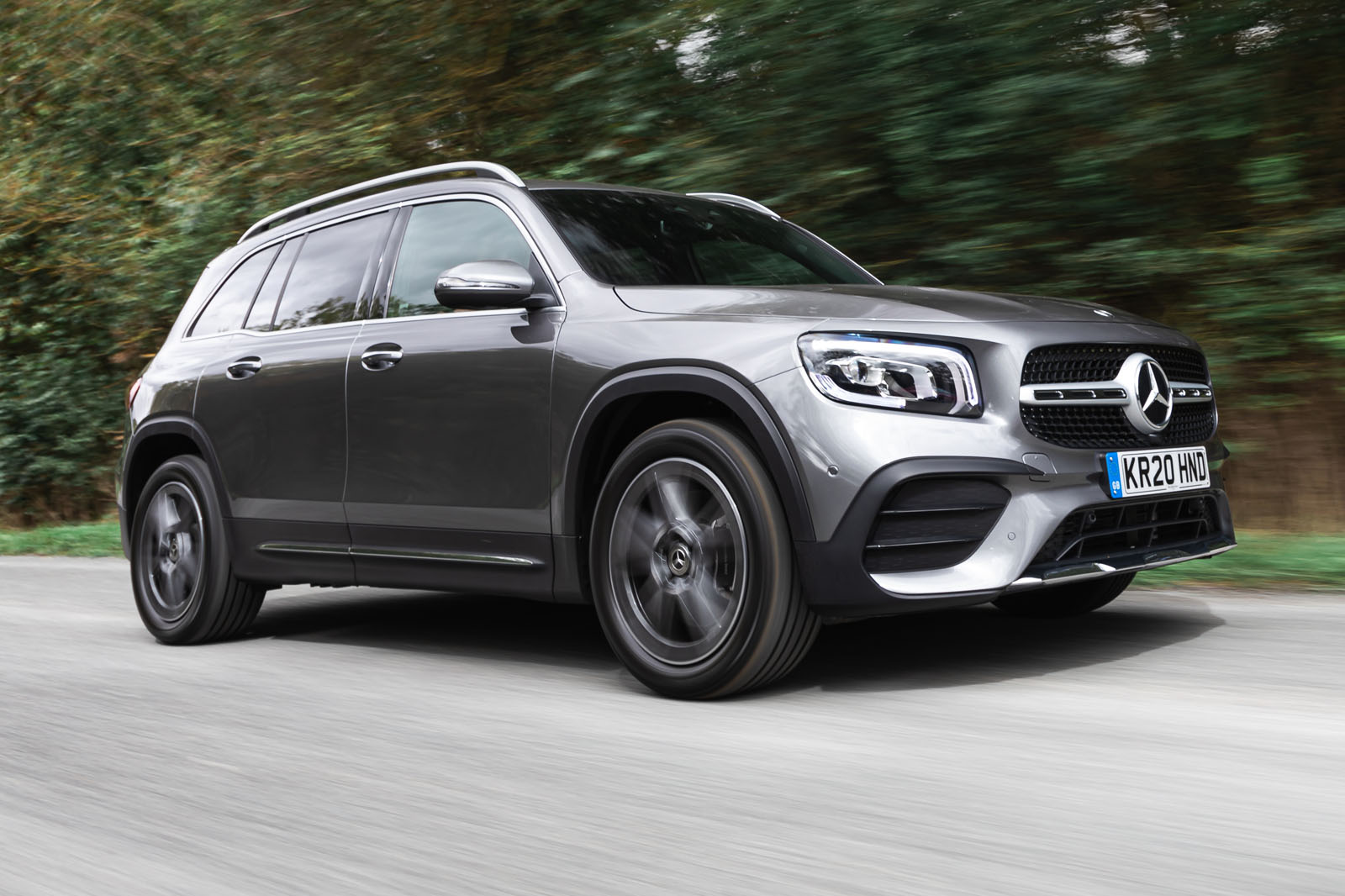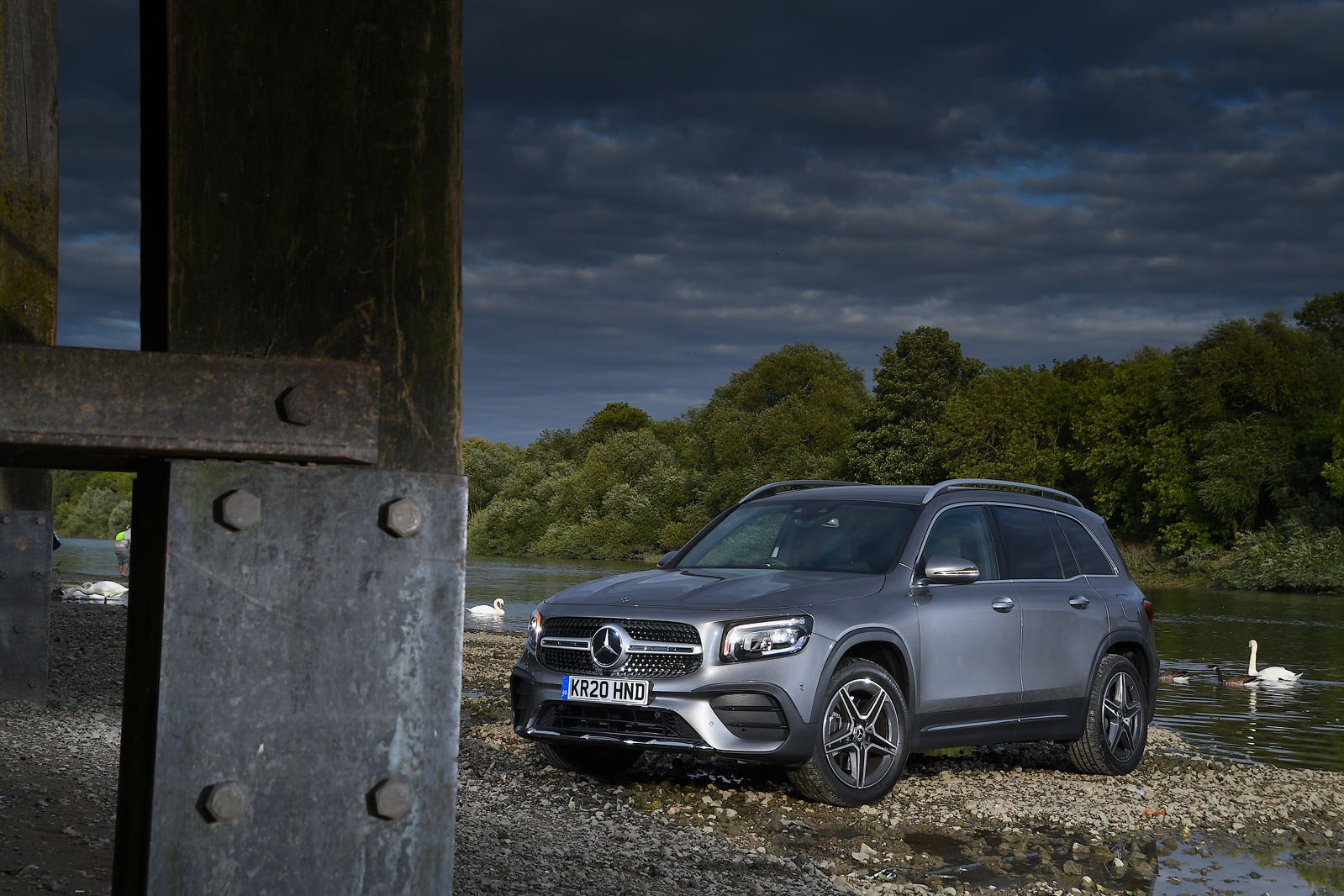There’s much about the GLB’s interior design and layout that will be familiar to those who have spent time in the smaller Mercedes-Benz A-Class and Mercedes-Benz B-Class models. On the face of it, this really is quite a smart-looking environment in which to spend time, although some of the trim finishes might not be to everyone’s taste. Customisable ambient lighting complements cool metallic-effect and piano black surfacing to chic effect, while leather-and suede-like upholstery boost the GLB’s tactile appeal.
As with those smaller Mercedes models, however, you will find a few scratchier plastics in the lower reaches of the cabin, and it’s perhaps a touch easier to extract a few creaks and groans from a few of its fixtures than it otherwise ought to be. The interior of a Discovery Sport might not pack quite as much obvious visual wow factor but, on the whole, there’s a general air of solidity about the Land Rover’s construction and execution that isn’t quite as prevalent in the Mercedes.
But even so, the GLB’s cabin works very well from a practical standpoint. There’s good adjustability of the driving position, with a generous amount of reach movement in the steering column and decent under-thigh support in the front seats. Admittedly, the chairs themselves are quite firm – a touch too firm for some of our testers – but they nonetheless offer good support for your hips and torso while on the move.
With a sliding middle bench that can open up as much as 760mm of typical leg room, adults won’t find spending longer periods of time in the second row a taxing undertaking. Sure, that’s still slightly less space than you’ll get in a Discovery Sport (up to 780mm), but the difference isn’t so drastic as to warrant criticism. Of course, there’s a third row of seating, too, and the sliding second-row bench means it’s that much easier to accommodate those additional passengers. Unsurprisingly, the two rearmost seats are targeted primarily at children and their tight confines won’t endear them to adult passengers.
With the third row in place, the boot is barely usable and struggles to accommodate something as small as a backpack without it falling out when the tailgate is opened. Fold the two back seats down, though, and you’ll have 500 litres of storage space, which can be upped to 1680 litres with the second row folded down, too.
Mercedes-Benz GLB infotainment and sat-nav
GLBs in Sport and AMG Line specifications come equipped as standard with smaller, 7.0in screens for the MBUX infotainment system and digital instrument display. Add the Premium package that was fitted to our test car, though, and those screens are upgraded to 10.3in displays. You’ll also gain an uprated, 225W sound system and MBUX augmented reality for the satellite navigation. This latter upgrade adds digital navigation prompts over a video feed from the camera to help you to navigate roundabouts and the like. It’s a smart-looking touch, although our testers soon found they switched it off.
Otherwise, the system’s operating software is as intuitive to use as ever. The trackpad on the centre console can take a bit of adjusting to, but the screen itself responds to your touch anyway and the thumbpads on the steering wheel work well enough. The graphics are pretty slick, too, and the sound quality from the Mercedes Advanced sound system is really quite good.


